Cardinal Meadowhawk Dragonfly [Nature on the Farmstead #3]
Nature on the Farmstead posts will be educational and informative about the nature that happens on my farmstead. Look forward to posts about wild animals, birds, wildflowers and plants, insects, and more!
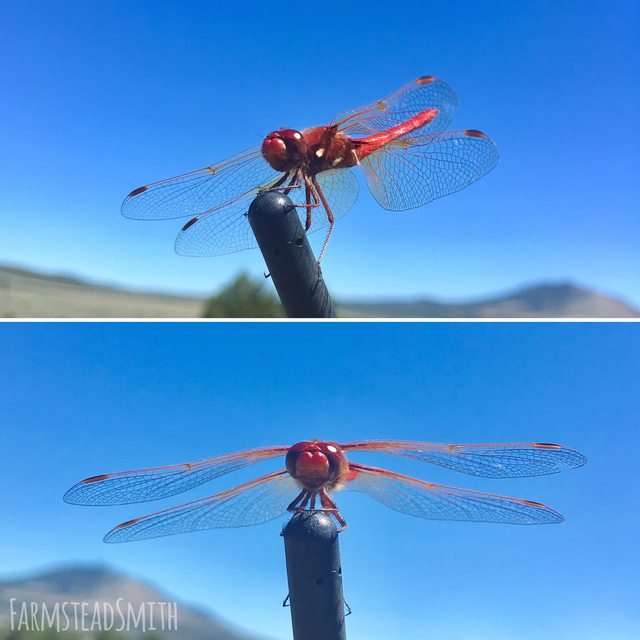
Cardinal Meadowhawk (Sympetrum illotum)
For some reason, dragonflies get a kick out of landing on my car's antennae. This happens kind of often. However, this guy really stuck out to me because I'VE NEVER SEEN A BRIGHT ASS RED DRAGONFLY BEFORE. I was in awe! And a little freaked out, to tell you the truth! I was on my way out the door to run some errands hand had to ask this dude for a photoshoot. He was surprisingly willing, patient, and still. Not camera-shy one bit! Haha
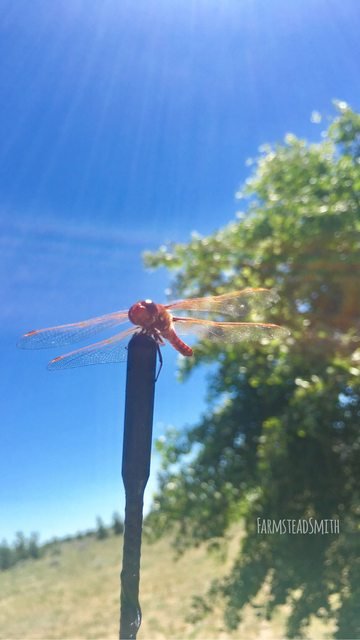
Description
And yes, this is in fact a male! The females are a pretty dull brown color, I guess I read that they're sometimes red, but not often. What you can't really see very well in these images are the two white spots that he has on either side of his thorax. I really had to look and realize that no, those weren't reflections. Haha. The adults are about one a half to one and five eighths inches long. I guess that's pretty large for the Sympetrum type.
Range & Habitat
These Cardinal Meadowhawks are found from Southern British Columbia, northwestern Idaho, and all the way down the west side of North America down into Mexico, Chile and Argentina! Quite the area to inhabit!
They are typically found near bodies of water, lakes, slow moving rivers and streams, ponds, etc. Funny enough, the closest body of water is like, 5 miles away, which is a large reservoir. I guess the crooked river is somewhere around here, but, not on my property!
Food & Life Cycle
After a male and female mate, the female will lay 12-300 eggs, each about the size of a period, directly into a point or other still body of water.
After about two weeks, the babies hatch and they are now called naiads or nymphs. They live underwater, within the debris at the bottom of the pond or lake for about a year. The naiads eat a variety of aquatic insects, including the larvae from mosquitos, aquatic flies, and mayflies. Sometimes they will even eat very tiny fish and tadpoles! Instead of actively seeking out prey, the young naiads will sit and await like ninjas for their food to come to them. This tactic keeps them from being dinner themselves!
After that initial year, the young naiads will be ready to transform into the dragonfly you see above. They typically crawl out of the body of water onto some sort of reed or plant sticking out from the water. Much like how a butterfly emerges from a cocoon, the naiad cracks open it's exoskeleton and crawls out as their dragonfly self (check out some great images here of their emergence!).
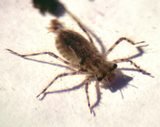
As an adult, the dragonfly will eat almost any soft-bodied flying insect such as mosquitoes, flies, small moths, mayflies, and flying ants or termites.
Uhm, yes!! Whoo hoo, something we KNOW eats mosquitoes?
How can I encourage dragonflies to visit my yard?
Sometimes dragonflies will even visit small bodies of water like a back yard pond.
Ideally, a garden pond varies in depth. Water plants, rooted in deeper water, provide a good refuge for nymphs, as well as habitat for prey. Emergent plants, such as rushes (Juncus) and sedges (Carex), rise above shallow water and provide convenient perching places, and are important for nymphs leaving the water to molt into the final, adult stage. [...]
A few flat rocks near the pond’s edge provide basking spots for dragonflies and access to the water for other beneficial insects and wildlife. (Pacific Horticulture).
More great tips on attracting them to your yard by the National Wildlife Federation!
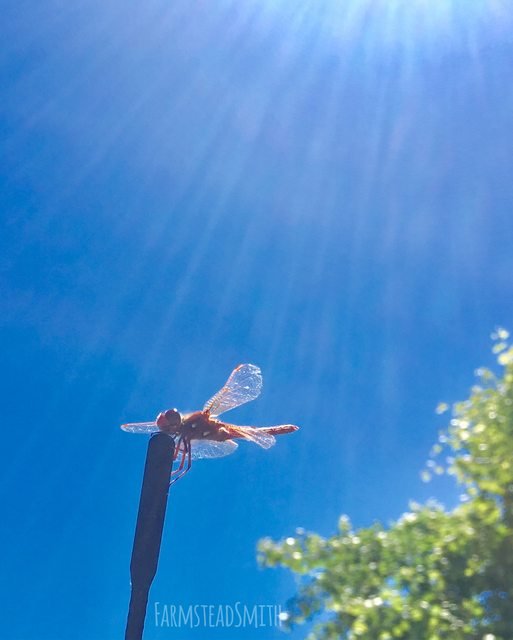
Info Sources
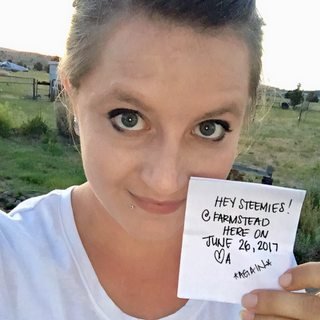
Photos by me using my iPhone 6s, unless stated otherwise!
Check out my most recent Steemit Posts.
- Why Steemit is Great for Your Homestead
- Markdown Editors - Post Formatting Made Easier
- ColorChallenge WednesdayYellow
- Introducing, THE DOG
- Seven Days In - My Thoughts and Experiences of Steemit Thus Far.
- Nature on the Farmstead #1
- Meet the Gucklings - The Guckling's New Space
- What will Happen with My Steemit Earnings
Blog Series
- Nature on the Farmstead - These posts will be educational and informative about the nature that happens on my farmstead. Look forward to posts about wild animals, birds, wildflowers and plants, insects, and more!
- Click here to just see all my posts in one place!
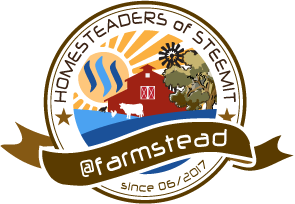
Badge by @daddykirbs
Get yours here!
Great info! I really think I am going to look forward to your posts as they are things I'm interested in. I like going to our local preseve and photographing these beauties! Great job, great research. Great pictures.
Oooh yay! I am real glad to hear it!! I am happy someone is interested in it. Haha :)
It's a real good way to document for me, for future knowledge also! I feel like, it's just something we should know. Things that visit our property and our around us, even just for a minute!
nice to see you here Lolomarie have a look at the #tsufamily
Yes!! This is awesome Farmstead! Stunning photos, upvoted and resteemed!!! :-D
Flatrider
THANK YOU!
You're welcome! :-D
Nice pictures, I'm following you now.
Cool, thanks!
Very educational. I can't say that I knew so much about dragonflies. Lol. But Dang! That's alot of eggs. Hahaha. :P
Yeah! I didn't really know much about them either! Definitely makes me want to put a body of water on my property for sure! Eat the bugs, friends! Haha.
Yea nobody wants too many pesky bugs flying around ( or Crawling ). Lol.
they look awesome Farmstead , resteemed
Thanks man!! My phone takes ridiculously good pics. Haha
no it's you , the phone just does what you tell it to do :)
I suppose that's true. But it's good quality cause the phone. Haha.
Great and informative post with gorgeous closeups of this red beauty! This is worth to be resteemed!
Thank you!! :) I appreciate it!
My pleasure! Have a nice day! 😃